By Alun Woodward, Online Triathlon Coach, ironguides.net
While the swim portion of the ironman may only represent 10 percent of the race, it does play a significant role in the outcome. The time taken to exit the water is just a fraction of the whole picture of performance— the state in which we exit the water and how much energy is expended during the swim is critical to the overall performance at the end of the day.
There are two key elements to the swim: technique and fitness. Different combinations of these elements can lead to very different results:
* technique plus fitness can equal a great swim and great race
* technique with no fitness can be a great swim but terrible race
* bad technique but great fitness can lead to a slower swim but great race.
I want to look at training for the swim by separating the topics of technique and fitness into two articles and then show how we can bring these together for your best race ever in a final article.
TECHNIQUE
Swimming is a very technical sport and, as such, is hard for the brain to cope with. Professional swimmers spend hours per day in the pool developing their techniques and searching for the mystical feel for the water. They will perform endless drills to fine-tune small details such as hand position, finger position, timing of the kick, etc. Even with all this focus on technique for races lasting just 2-4 minutes, they are unable to hold perfect form in the latter stages.
As triathletes we simply do not have the training time available to do the above. On top of that, we are also racing in the water for at least 48 minutes in an ironman— there is no way we are going to maintain a perfect technique for this length of swim.
As triathletes we must look at the technique we need to cope with race conditions and then build a simple form that is easy to perform and maintain for the duration of the event — a technique that will not fall apart under duress.
Swimming in open water with lots of athletes around us requires a stroke that is stable and not easily disturbed by knocks and currents. To do this we need a slightly wider hand entry than we do in a pool stroke; the hands should enter the water slightly wide of the head, shoulder width, and right in front of the head. Please check out the video below.
If we gently place our hands into the water and this water is moving sideways or back against us, our hand is going to be stopped or moved. We need to ensure that we hit the water hard and thrust the hand straight forward through the water with force to full extension. The hand should enter the water at an angle of about 30 degrees and push forward under the surface, always moving slightly down as it moves forward. The key here is thrusting the hand into the water—the more force used, the faster the hand reaches full extension and the less chance for thinking.
Once the hand reaches full extension, we need to get in position to pull. To do this, we keep the hand in position and kick the elbow outwards and slightly towards the surface – this brings the hand in position to powerfully pull straight back.
Following these key points it is possible to build a very stable and effective technique for triathlon swimming, summarized simply as:
SHOULDER-WIDTH HAND ENTRY
DRIVE HAND IN AND FORWARD AGGRESSIVELY TO FULL EXTENSION
KICK OUT ELBOW AND PULL BACK HARD
This technique is easy to develop and given a week of practice most triathletes can master these skills to a reasonable level of efficiency. Have a friend take a video of you to check that you are doing everything correctly, don’t look for speed now but simply focus on the three points and learn how it feels when you are doing this accurately.
TOOLS
Swim tools can really help speed up this learning process. An extra-large set of paddles will help create stability in the water and they force better movement patterns because they make it hard to pull through the water. The TYR catalyst paddle was designed to enhance elbow bend and bring your hands/arms into a better position to pull.
Using a pull buoy aids flotation and removes the focus on kicking and body position, which in turn allows us to concentrate better on what the arms are doing!
LEARNING
This technique is easy to learn as it keeps things simple: focusing on doing the three points mentioned above correctly removes many problems and develops traits that other technique-training systems spend hours trying to establish but never really succeed in as the movement patterns are too complex.
Spend your time learning to feel when the technique is correct. Make some key points that are easy for you to remember and use those as a cue when your form starts fall apart to get back on track. These key points will always be individual so feel what is right for you — create a picture with each one and set these in your mind.
Personally I think of the sound the hand makes as it whooshes through the water to full extension. Then at full extension, the elbow twitches out and towards the surface to start the pull back. Simply repeating this during a swim ensures every stroke is a better stroke. As a bonus it’s a great distraction from the pain and effort in hard sets!
The process of learning this technique should not take longer than a week to 10 days. Once established it’s time to start work on building your fitness using your new technique!
–
PART 2 – SWIMMING FOR IRONMAN — SWIM FITNESS
In the first part of the article I talked about the process of developing a technique for optimal open-water swimming—here, I want to look at swim fitness and how we can build it.
Swim fitness for triathlon is not about getting out of the water as fast as possible—though of course this is a major part of swim fitness. Instead, we want to think about exiting the water both fast and fresh, a point many, many triathletes miss. The swim is a relatively short part of the race but it can have a huge impact on the rest of your race depending on the impact it has on your body.
Aside from all this, we should also look at the swim as one of the safest ways to gain aerobic endurance fitness; swimming is low impact and as such safe to train with volume without injury, especially when compared with running.
Pro racing offers many examples of triathletes who swim poorly but have great races. When we follow their blogs / twitter feeds, these athletes seem to swim incredible volume as part of their program, without improving much in terms of swim time. What I notice as a coach, though, is that these athletes always tend to produce the strongest bike and run performances. In races they get on the bike and they are on it from the start, whereas a lot of the front-pack athletes tend to be tired and need 20-30km to get into the ride.
With the dynamic of racing today, you cannot afford to lose time in that first 30km so those front-pack riders who left the water tired have to suffer and end up using way too much energy, which comes back to bite them later in the race.
The slower but fitter swimmers behind them, on the other hand, exit the swim and are racing the bike right away—riding fast and comfortably, as opposed to overextending themselves, and as a result they have a great ride and an even better run.
The above shows very clearly that triathlon is not just three individual sports but a sport all of its own; the impact of training mix and fitness in the three disciplines affects the final race result in a huge way!
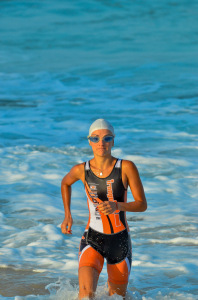
SWIM PROGRAM
When designing a swim program, we need to consider several factors: the distance we need to cover on race day, how the sessions fit into our overall program, while the elements we will face in our event are also important.
THE LONG SWIM
To start off, I like to plan a race-specific session. For ironman this is going to be a long endurance swim with some harder work in the back-end of the session. Many athletes seem to struggle over the final 1km in ironman and can lose a lot of time here, despite their effort increasing greatly. This is due to a lack of conditioning and the fact that most triathletes swim sessions in one-hour intervals, sets of about 3km for a good ironman swimmer.
For an endurance swim, I want to aim for 4-5km, or 90min, and make this a strength workout so I will use a pull buoy for a large part of the session and add paddles towards the second half to further increase the difficulty, just as on race day.
Paddles have another important role to play—they also improve technique. So as we get tired by adding the paddles, we ensure more good strokes while also boosting the difficulty of the swim, a win-win situation in this session.
In the final part of the swim we do some short ALL OUT sprints to get the body used to fully activating muscle fibres while fatigued. This will result in a higher level of endurance and an ability to maintain form and speed in the closing kilometre on race day.
The long swim tends to lead to a lot of fatigue in athletes, simply because we do not tend to do them. We think nothing of going for a 2-hour run or a 2-hour bike, but a 2-hour swim is a big ask!
Scheduling the long swim is then important; avoid doing this before another hard session as we can expect to feel very tired after.
INTERVAL SWIM
This would be a shorter swim with a lot of hard work. Any specifics we need for race day I would like to include in this session. I like to use changes in pace within this workout to teach athletes how to control and check their stroke. An example would be swimming 300m intervals with an increase of pace every 100m—watching our times we can see if the effort is replicated on the clock.
Often an athlete will swim the same time for a moderate and hard interval as they are not able to hold technique under the duress of a hard effort. Through intervals as above we can learn to control effort and make sure technique is not falling apart.
I would use the reducing set at the start of the session, and then move into a set of hard short intervals in the back-end of the set to see if the athlete can hold times and form for effort.
Depending on placement of the workout in an athlete’s week, I may add paddles to the hard efforts to ensure better technique is maintained. Also, if an athlete is going to be aerobically tired or has a harder session to do later in the day, paddles will make the swim more about strength, and less about high heart rates and breathing. Remember what I said at the start, training mix is very important!
An example set:
* choice warmup
* 3×300 pull @ 100 easy – 100 moderate – 100 hard + 1min rest
* 9x100m hard pull/ paddles + 30s rest
* choice cooldown
We can further advance this set by making the hard intervals at the end specific to race conditions. For example, breathe every second interval with head up and looking forward for two full strokes. This would be appropriate if the goal/next race offers wavy conditions such as Hawaii. Lifting the head longer gives more opportunity for good navigation but uses different muscles, so these need to be trained.
If the technique is good, the times for the intervals will be the same—if not, the clock will let you know pretty quickly!
FURTHER SWIMS
Depending on the availability of training time in the week, further swims will be added to the program. These swims would have a reason, always building fitness, but used for specific fitness gains or recovery around other sessions!
In conclusion, we need to stop looking at swimming as a means of getting to the bike and instead consider the whole race picture. We need to ensure we get fast and have the fitness to swim fast while leaving the water fresh; this means we need training that is different to that of a swimmer who has to swim very hard for a short duration and can give everything for this duration. Triathlon is triathlon and we need to start training that way if we want the best results!
–
PART 3 – SWIM DRILLS: WHEN ARE THEY REALLY NEEDED?
In the first part of the article in this series about swim technique, I talked about the process of developing a technique for optimal open-water swimming. In the second part, I discussed swim fitness and ways to build it. Here, I consider the reasons we use drills and when to use them.
When we think about swim training/coaching, we always think drills, drills, drills. Many top-end swim coaching companies base their whole business around drills—their own special drills—to produce the best stroke. I want to look at why we use drills and when we should use drills as I think they are often overused.
Firstly, a drill is breaking down the stroke into its component parts and refining movement patterns to enhance the overall stroke and so improving performance. Blindly prescribing drills to every swimmer, though, is not the route to go in my opinion; we need to see each individual athlete to assess what they are doing wrong and what needs to be fixed. We can use video footage of the swim stroke to gauge any potential problems and, if there are any, then go about fixing faults—if something is already working then there is no need to try and fix it. In fact, trying to improve something that already works fine can be very detrimental to the athlete.
When we train in the pool or open water, the aim is to perform as many good strokes as possible. If our technique is solid and we can repeat it then we do not need to be doing drills to change anything—in essence every stroke is a drill! This, though, is rarely the case and as triathletes we have days when we are so tired that our technique can just be terrible and needs a little stimulus to get back to good pathways.
In essence, the body gets lazy and wants to switch on the least amount of muscle to perform any task in order for the fatigued muscles to recover.
This “laziness” causes us to swim very poorly compared with when we are fresh but we can override the brain by performing drills that force muscle activation. So if you get in the pool and feel bad, your stroke timing feels off and power is low, then you need to do something about it: stop your session and perform a drill to fix what’s wrong and then get back into your workout.
It may only take 2-4 x 50m to fix the issue and you can then have a great session.
As an example I like to use what I call the power drill on days when I just feel wrong in the water: this is a great drill that sets stroke timing and also activates all swim-related muscle fibres.
POWER DRILL
Push off the wall on your front, head down and using a light kick, arms are always under the water—elbows and upper arms at the surface and wide of the body. Now pull one arm forward and the other arm back, so you are fighting one arm against the other. It is important that you always lead with the elbow so when pulling the hand forward from the back, your hand is pointing to the bottom of the pool all the way with the elbow leading the hand until it passes the shoulder—from this point the hand comes forward to full extension out front. The hand pulling back does the opposite so the hand comes down while the elbow stays forward of the shoulder and then all back together.
SEE VIDEO BELOW FOR DEMONSTRATION
When you master this drill, you should hardly be moving up the pool!
When we perform a drill in training it is important that we do the drill and then immediately swim after. This is helping the brain associate the drill to the full technique. So my advice: if you feel off, stop your session and perform 2-4 x50m, swimming 25m drill and then 25m moderate effort full stroke.
While the power drill is my go-to drill for most athletes right now (depending on the athlete and the issue), other drills can be used to fix specific problems.
DRILLS FOR INJURIES
I also recommend using drills when you are injured or notice a sudden pain. With swimming this is very common in the shoulder around the rotator cuff. When we swim with a technique that goes against our structure we can easily get inflammation in this area and it is very painful. The standard advice given to athletes is to stop using paddles or swimming until the problem goes away. This can take a very long time and not really addresses the issue so the pain is likely to return once back to normal swimming.
Shoulder problems occur easily in triathletes as we have stiff shoulders from all the riding we do. We need to swim with a style that takes this into account.
So if you develop shoulder pain, or if you already have, then a couple of drills will go a long way to solving the problem. The issue is normally bringing the recovery arm too close to the body and too high above the water—to remedy this we need to recover wider over the water while keeping the hand closer to the water.
DRILL ONE – hand drag
Simply swim as normal but the recovery hand must stay in the water all the way to the wrist—the only way to do this is by staying wide of the body and when you get this right you will instantly feel less stress on the shoulder.
DRILL TWO – finger trail
This is a follow-on drill from the first, so now the recovery hand is just above the water and the finger tips are still touching the water on the recovery.
If you have shoulder problems, these drills should be performed in your warm-up before every swim; if you suddenly develop pain during a session, you should stop and perform some drills before continuing. As above, I recommend just 3-4x50m of each drill, swimming 25m drill and then 25m moderate.
Drills have become an integral part of swimming and certainly have their place when learning to swim. After that, drills must be very specific to the athlete’s needs and performed only when needed. As triathletes we have limited swim-training time and we need to make the most of this for fitness gains. Swim fitness is very important when racing triathlon, as your condition (much more important than time) leaving the water affects the rest of the race. The focus of your swimming should be on taking as many good strokes as possible and using drills can aid this process at times.
***
Alun Woodward, ironguides Online Coach
–
Train with ironguides!
Download our free e-Book “Triathlon Secrets” – Training methods of olympic medalist, ironman and world champions revealed
Personalized Online Coaching: Starting at USD190/month
Monthly Training plans (for all levels, or focused on one discipline): Only USD39/months
Event based training plans:
Sprint Distance (USD45 for 8-week plan)
Olympic Distance (USD65 for 12 week plan)
Half Ironman (R$95 for 16-week plan)
Ironman (USD145 for 20-week plan)
X-Terra (USD65 for 12-week plan)
Running Plans (10k, 21k and 42k – starting at USD40)

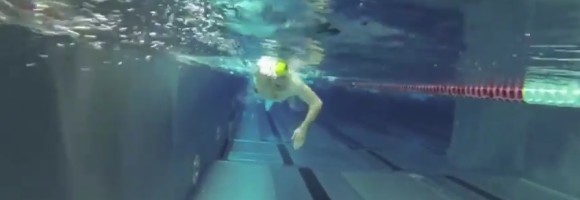


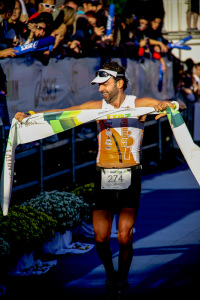
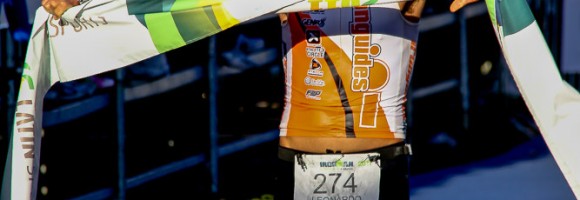
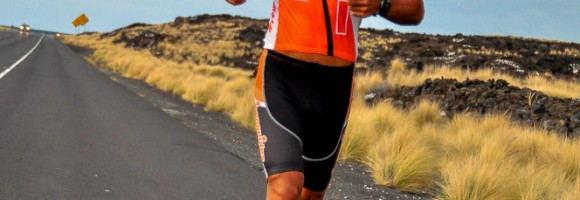

Recent Comments